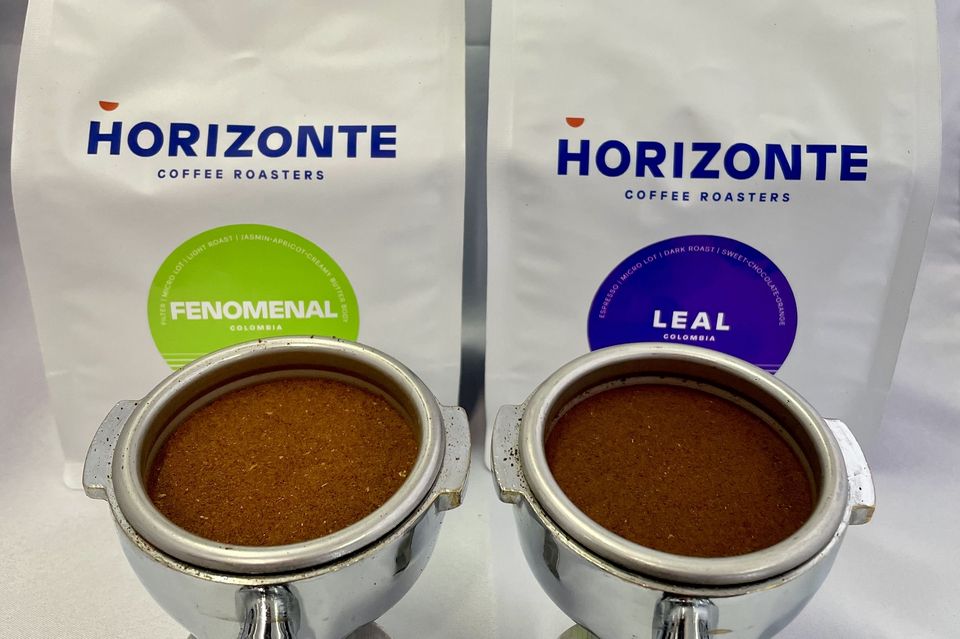Who hasn't been there yet: You bought high-quality espresso beans, a good grinder and a portafilter machine, but the espresso simply doesn't taste the way it should? Espresso is not a simple drink. To get the perfect espresso, all details have to be right.
Especially with more complex specialty coffees, attention must be paid to the grinder setting to brew a balanced espresso. Why? We do the grind test.
Traditional espresso: dark roast, low aromatics.
Specialty espresso: medium to light roast, broad aroma spectrum.
Traditional espresso focuses on roasted notes and sweetness. The coffees have a lot of body, are usually heavy and have little to no acidity. They are also associated with "Italian roast".
Specialty espressos are usually coffees that are made from complex (acidity, sweetness and flavors) green beans. They are roasted medium- to light.
The test
We compare two coffees from our roastery and show you what to look out for when grinding and extracting.
One of our traditional coffees is the "Leal", which are washed Castillo beans from Colombia. This coffee is roasted darker, so it has very little acidity, is sweet, and has notes of chocolate and nuts in addition to certain roasted flavors.
Our super specialty espresso or better filter coffee is the "Fenomenal". A washed Geisha from Colombia which we roast very light and which therefore has a lot of acidity and complexity. The coffee "lives" and has a tea-like body and notes of jasmine, bergamot and apricot.
A rule of thumb, for the amount of beans in a double espresso is the recipe: 18g of beans in, 42g of coffee brew out.
For the test extraction, we chose the same fine grind for both beans.
What happened?
The traditional roasted "Leal" took about 35 seconds before we had 42g in the cup. The "Fenomenal", on the other hand, came out of the portafilter like a waterfall, reaching 42 grams after 18 seconds.
The extraction time of the Light Roast was more than twice as fast as the darker "Leal" at the same grind size.
What are the reasons for this?
A lighter roast means harder beans and therefore fewer fines. These dissolve less quickly and have less resistance to the water. This leads to faster extraction.
With a darker roast, the beans are more brittle and have more fines. As a result, the water is absorbed more quickly and thus offers more resistance. This leads to a longer extraction.
Taste
Due to the very short brewing time of 18 seconds, the "Fenomenal" had no sweetness, was very sour (or too much acidity) and a quick finish.
The traditional "Leal" with a brew time of 35 seconds was bitter, dry, astringent and simply too strong.
So, both are not yet properly adjusted.
What do we need to change?
A specialty espresso needs a longer extraction time and is therefore ground finer. We set the grind much finer and this increased the extraction time from 18 seconds to 40 seconds. The result: The espresso smelled sweet, the aromas, body and acidity harmonized and the flavors came through clearly. A balanced specialty espresso, just the way it should taste.
A traditional espresso basically needs a slightly shorter brewing time and is ground coarser. We extracted our "Leal", the traditional espresso, in less time. The darker the coffee beans are roasted, the shorter the extraction. At just under 25 seconds, 10 seconds less brewing time, the "Leal" has a much more balanced acid/sweet taste with a nice finish and a nice crema.
However, the best brewing time also depends on the beans. But once you've found the right grind for your favorite beans, there's nothing standing in the way of the perfect espresso.
Note: Of course, factors other than grind size affect the balance of an espresso. For example water quality, water temperature, amount of ground coffee, tamping pressure, leveling.

